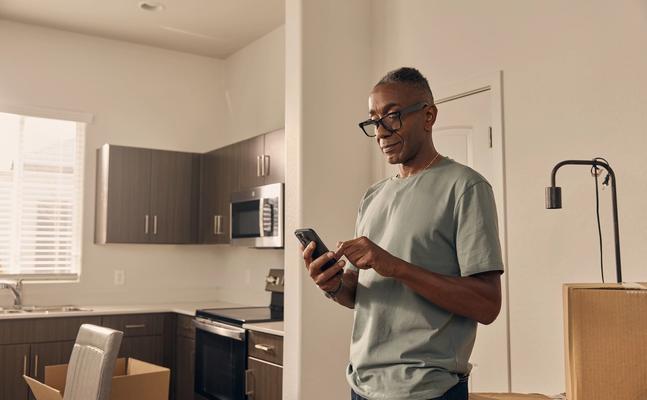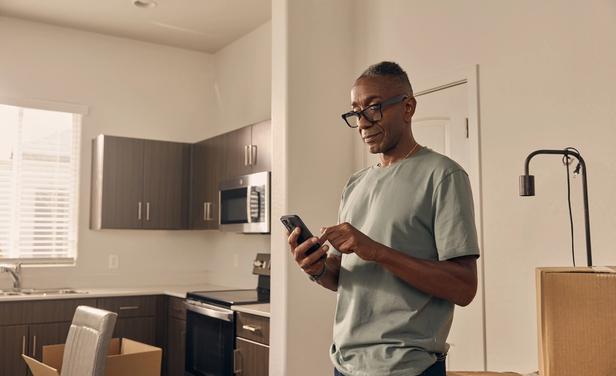Subscribe to our newsletter
As technology continues to shape how we live, multifamily property owners and operators recognize the need to integrate smart home technology into their communities. But choosing the right solutions from the many available can feel overwhelming.
The right smart home technology enhances resident satisfaction, operational efficiency and property value. This guide will help you navigate the smart home landscape and make informed decisions about your property.

Beyond amenities: The connected community blueprint
Smart home technology is no longer a perk; it’s a necessity for modern multifamily properties. Today’s residents expect seamless connectivity, enhanced security and convenience-driven automation.
For owners and operators, selecting the right smart home tech isn’t just about installing the latest gadgets—it’s about creating an integrated living experience that improves operations, attracts tenants and adds long-term value.
The evolution of resident expectations
According to the 2024 NMHC/Grace Hill renter preferences survey, demand for smart home technology is rising across all demographics. Nearly 70% of renters say smart home features influence their leasing decisions. This trend is even stronger among millennials and Gen Z, who prioritize mobile-controlled access, climate control and package management solutions.
With the rise of remote work, technology-driven amenities have shifted from nice-to-haves to must-haves. Features that support remote work—like high-speed internet, smart thermostats and digital access control—are now essential to resident satisfaction and lease renewals.
Mapping the connected resident journey
The right smart home tech enhances every stage of the resident experience, from move-in day to daily living and community engagement. Here’s how smart home technology can help improve each touchpoint:
Move-in experience
Digital lease signing streamlines paperwork and accelerates the onboarding process.
Smart access provisioning allows new residents to move in without the hassle of key exchanges.
Automated welcome sequences provide residents with essential information about their smart home features.
Daily living
Smart thermostats and lighting systems optimize energy use and create a personalized living environment.
Voice-activated home controls enhance convenience for tech-savvy renters.
Package management solutions ensure seamless and secure delivery access.
Community engagement
Mobile app-based resident portals provide instant access to maintenance requests, amenity reservations and community updates.
Smart access control systems secure common areas while offering flexibility for residents.
Automated event management tools help foster a connected resident community.
Competitive differentiation through technology
To stay competitive in a crowded market, multifamily owners must embrace smart technology that enhances resident experience and operational efficiency.
Smart home adoption is increasing. The Grace Hill report shows that more than 60% of renters prioritize smart locks and remote access control when choosing a rental. Properties that lack these features risk falling behind and losing market share.
ROI metrics
Smart home technology isn’t just about attracting and retaining residents—it also improves operational efficiency. Key ROI drivers include:
Operational cost reduction: Automated energy management lowers utility expenses.
Staff efficiency gains: Digital access systems reduce the workload on property managers.
Higher resident satisfaction scores: Connected living features lead to longer lease terms.
Lease renewal impact: Properties with integrated smart home features see a 5-10% increase in lease renewals compared to traditional apartments.
Implementing the right smart home tech: A three-phase approach
Phase 1: Laying the foundation
Conduct an infrastructure assessment to ensure proper network and WiFi coverage.
Establish security protocols for resident data privacy and system integrity.
Train on-site staff to manage and troubleshoot smart home systems effectively.
Phase 2: Core systems implementation
Install smart access control to manage entry points securely.
Deploy in-unit smart home solutions like thermostats, lighting and leak detection sensors.
Integrate building automation platforms to centralize management and data insights.
Phase 3: Enhancing resident experience
Add community engagement tools such as mobile resident portals and digital concierge services.
Implement smart workspace solutions for remote workers, including reservable private offices and high-speed WiFi zones.
Explore future expansion capabilities to integrate emerging technologies such as AI-driven maintenance predictions and energy optimization.
Measuring success & future-proofing your investment
The effectiveness of smart home tech should be continuously evaluated through key performance indicators (KPIs), such as:
Adoption rate metrics: Measure resident engagement with installed smart features.
Satisfaction benchmarks: Monitor feedback and adjust offerings to meet evolving demands.
ROI tracking methods: Assess cost savings, operational efficiency and lease renewal improvements.
Looking ahead, scalability and integration will be critical for staying competitive. Investing in modular, upgradeable smart home solutions ensures long-term adaptability as technology evolves.

Build a smarter future today with SmartRent
Smart home technology should create an ecosystem that benefits both residents and property managers. With the right strategy, owners can enhance the living experience, cut costs and future-proof their investments.
Discover how SmartRent’s solutions can help you build a truly connected community. Schedule a demo today to see our technology in action.

